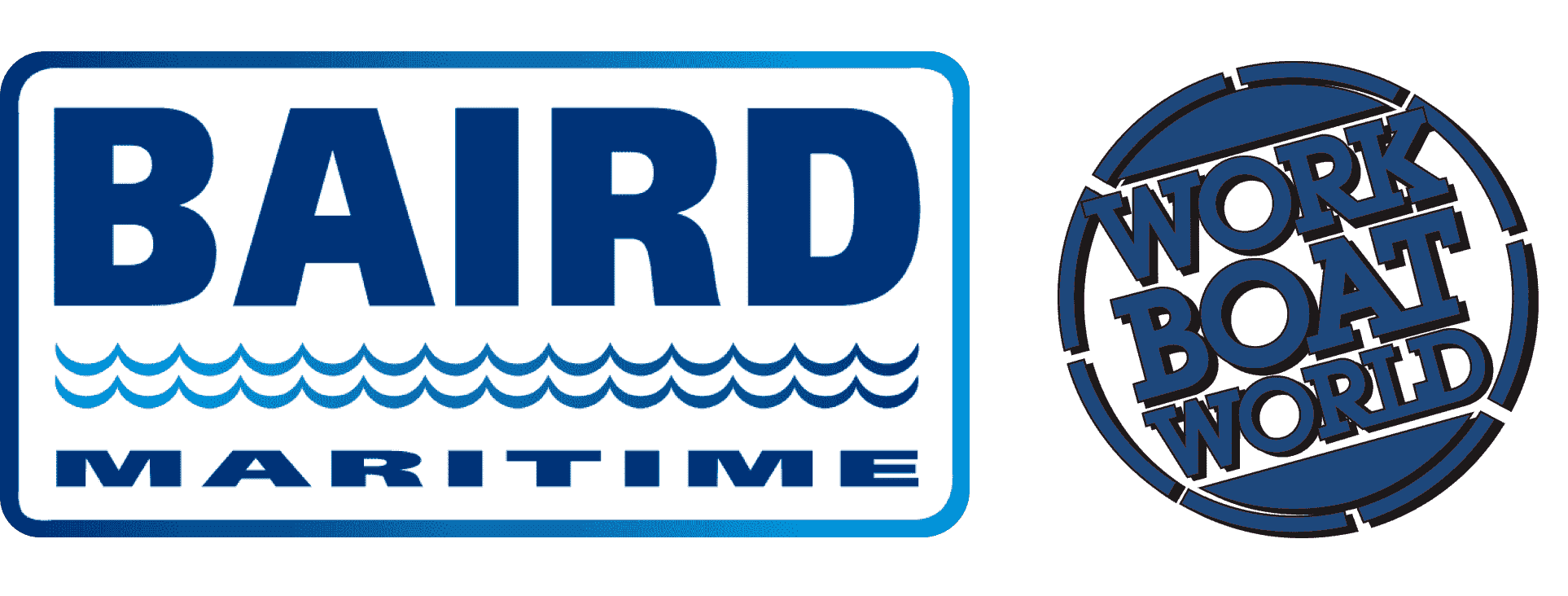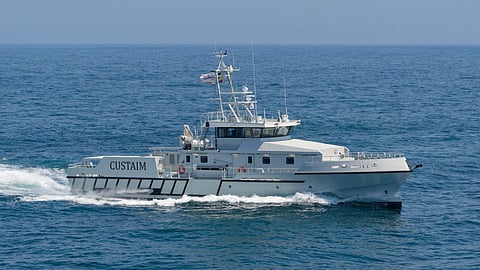VESSEL REVIEW | RCC Cosaint – Hybrid patrol boat for Ireland's Revenue Commissioners service
The Revenue Commissioners of Ireland recently took delivery of a new patrol boat built by Spanish shipyard Armon.
RCC Cosaint was designed by French engineering firm Mauric for operations including surveillance, customs enforcement, counter-drug patrols, and search and rescue along Ireland’s coastline, which spans nearly 3,200 kilometres (2,000 miles).
The vessel is slated to replace RCC Suirbhéir, an earlier boat that the Revenue Commissioners has been operating since 2004.
"The Irish authorities demanded a modern, versatile patrol vessel capable of exceeding 18 knots, cruising steadily at 16 knots, and achieving more than 750 nautical miles of range," Simon Voisin, Naval Architect and Project Manager at Mauric, told Baird Maritime.
"It had to remain operational in up to Beaufort force seven winds and six-metre seas, launch and recover a rigid inflatable boat (RIB) quickly, and be ready to integrate unmanned aerial vehicles (UAVs) for extended surveillance."
The boat also needed to ensure crew comfort and endurance, with accommodation for eight people for multi-day missions.
The 34.15- by 7.3-metre (112- by 24-foot) Cosaint is fitted with a gyrostabiliser and a hybrid diesel-electric propulsion system with two main engines. Mauric said the hull design has been validated through ten previously delivered vessels, providing operators with excellent performance in challenging maritime conditions.
The studies conducted by Mauric enabled the design of a vessel meeting Lloyd's Register classification requirements, ensuring compliance with international maritime standards.
"What makes Cosaint stand out is the integration, for the first time on a vessel of this size, of a high-capacity gyrostabiliser, offering a dramatic reduction of roll and enhancing operability in the rough North Atlantic seas," added Voisin. "It fills a capability gap in the Irish customs fleet by offering a patrol vessel that is fast, discreet, and highly manoeuvrable, yet capable of extended endurance in severe weather.
Voisin said the boat provides a stable platform for customs enforcement and rescue operations, while reducing emissions and fuel consumption. It allows the Revenue Commissioners to extend its reach at sea, with better crew safety, comfort, and efficiency.
Capable of silent electric navigation
The hybrid propulsion system delivers a speed of 18 knots with reduced fuel consumption as well as a range of 750 nautical miles. When running on electric power alone, the vessel will be able to operate silently at nine knots, which is ideal for conducting surveillance operations. In conventional diesel mode, the vessel can reach a top speed of 18 knots.
"The hybrid arrangement is unusual in a patrol vessel of this size," Voisin told Baird Maritime. "The combination of PTO/PTI with SCR exhaust treatment allows the vessel to meet demanding environmental targets while also providing operational flexibility — from silent low-speed patrolling to high-speed pursuit."
The designer added that engineers integrated gyroscopic stabilisation without compromising the vessel's operational capabilities. The custom-optimised mounting system maximises seakeeping whilst preserving deck space and functionality.
RIB and UAV platform
The vessel is fitted with a stern ramp for launch and recovery of a 6.25-metre (20.5-foot) RIB for use in boardings, while an aft access door facilitates personnel transfer during interceptions.
The stern is also fitted with a dedicated landing platform for use by UAVs that would help expand the vessel's surveillance coverage.
Removable rescue decks have been integrated into the side passageways. These allow the crew to remove a grating section and descend by stairs directly to the recovery platform, safely bringing survivors aboard while keeping the side decks continuous and unobstructed during normal operations.
"The vessel is also fitted with a compact but powerful deck crane, able to lift over one tonne at close range and handle loads of more than 800 kg at a reach of over seven metres," said Voisin. "Operated by wireless remote control, it gives the crew the flexibility to move operational equipment, handle containerised modules such as diving gear, or support recovery tasks."
Improved all-round visibility
The wheelhouse electronics suite meanwhile includes Furuno radars, VHF radios, AIS, and Intellian satellite communications gear. The wheelhouse itself has forward-leaning windscreens to help reduce glare as seen from the helm station.
A full 360-degrees of visibility allows the bridge crew to directly oversee all activities around the vessel and on the aft deck, including the launch and recovery of the RIB and UAVs.
"The wheelhouse is modern and ergonomic, tailored to long watches in heavy weather, ensuring both comfort and operational efficiency," said Voisin.
The crew facilities include a mess, a galley, and one- and two-person cabins for accommodating up to seven personnel.
"Designing Cosaint meant solving several integration challenges," Voisin told Baird Maritime. "A gyrostabiliser of this size had never before been fitted to a 35-metre patrol vessel and demanded careful structural and stability analysis."
Voisin said the machinery space had to accommodate a full SCR exhaust system, while also hosting a hybrid propulsion arrangement with PTO/PTI gearboxes on twin shafts, though he emphasised that bringing these technologies together has provided valuable lessons that Mauric can apply in working on newer generations of patrol craft.
"The project underlined the importance of collaborative design between [the naval] architect and the shipyard and demonstrated how innovations in propulsion and stabilisation can be applied to vessels under 40 metres without compromising robustness or endurance."


